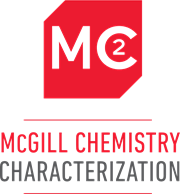A HoLDI mass spectrometry platform for airborne nanoplastic detection

· There are no established protocols for nanoplastic detection within complex environmental matrices.
· Mass spectrometry (MS) analysis of environmental nanoplastics is impeded by methodological constraints.
· Ariya's lab, namely Zi Wang, present a versatile platform evolved from matrix-assisted laser desorption/ionization (MALDI) MS for airborne nano/microplastic research.
· The 3D-printed hollow-laser desorption/ionization (HoLDI) target enables efficient, high-throughput analysis of aerosols collected on simple substrates without pre/post-treatments.
· HoLDI-MS determines the chemical composition and relative quantity of real-world airborne nano/microplastics, while used with conventional portable samplers and particle analyzers.
· Polyethylene, polyethylene glycol, and polydimethylsiloxanes are detected in an indoor environment, with a higher amount in the micro-sized range.
· Polycyclic aromatic hydrocarbons present in an outdoor setting, with a higher quantity in the nano-sized range. Morphological and elemental data provide additional evidence for observed contaminants and support multidisciplinary research interests.
· HoLDI holds promise as a standardized analytical framework for any air or water samples, facilitating research harmonization worldwide.
Please visit the following link for more information: https://www.nature.com/articles/s42004-025-01483-5
